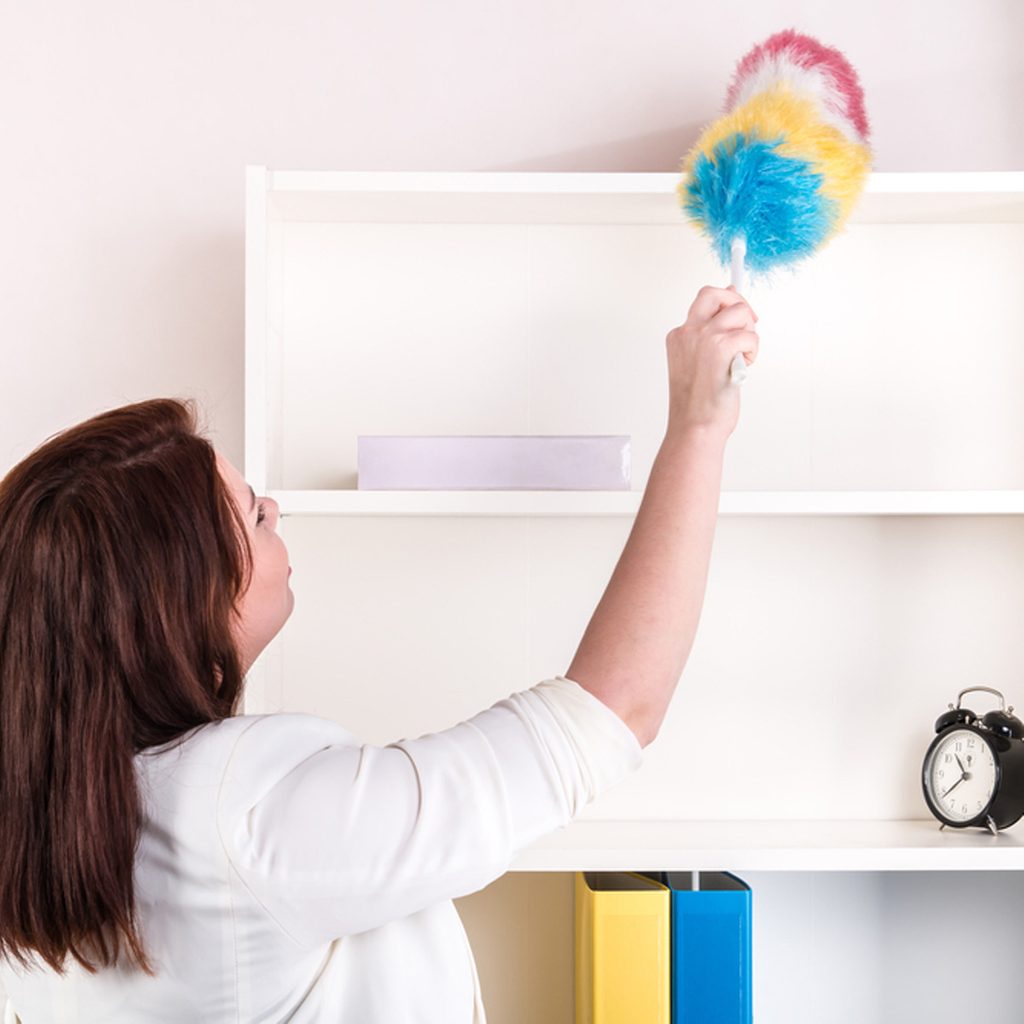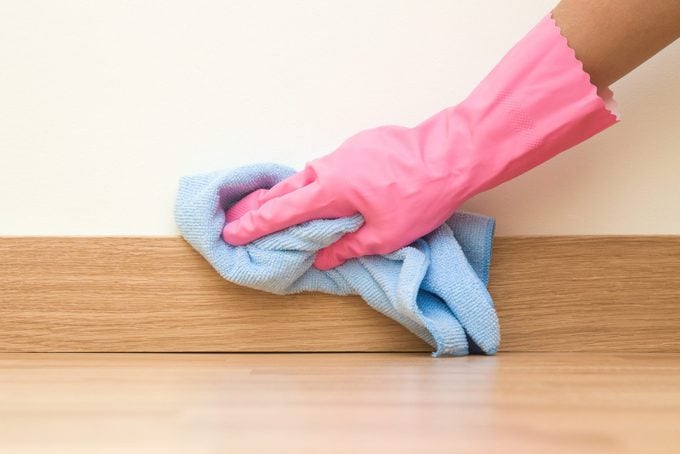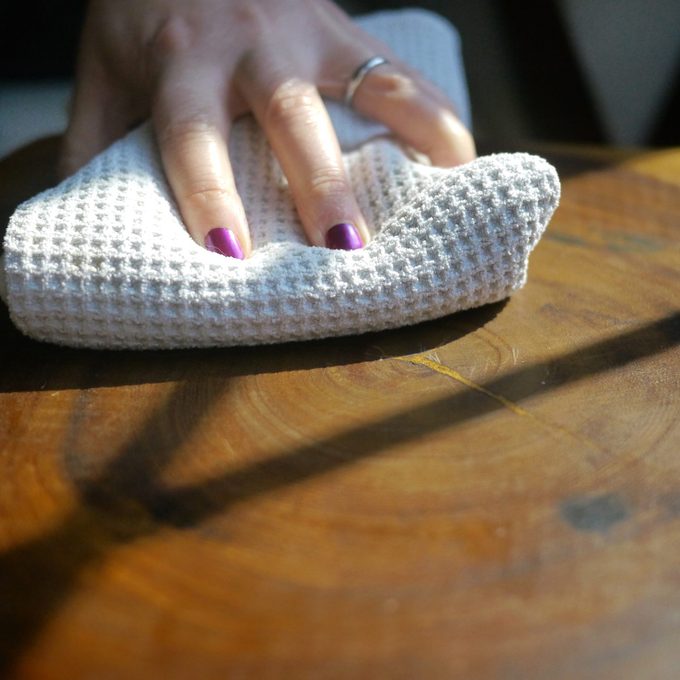How to Dust Your Home the Right Way
Updated: Apr. 20, 2023

There's no way to prevent dust from accumulating in your home, but you can control it with a regular cleaning routine that follows these simple steps.
Although you can beat back the general household dust invasion, dust will never go away. Wipe it up one week and by the next, a fine gray film has settled on the picture frames and mantel, and dust bunnies are scurrying around under the bed.
No one yet has found the magic that’ll make dust disappear, particularly airborne dust. Hardware improvements such as vacuums with better filtration and whole-house air cleaners can make the job a bit easier, but dusting is still a weekly chore. And frankly, we don’t have any revolutionary ideas either.
The basic solution is pretty much the same as grandma taught—clean, clean, clean. But it’s important to know whether you should dust or vacuum first.
However, if you target the key places where dust collects and deal with it before it goes airborne, you can at least put a damper on dust. In this article, we’ll tell you where dust originates and where it builds up, so you can focus your cleaning efforts on those spots.

On This Page
What Is Dust Made Of?
For practical purposes, household dust fits into two categories: small stuff and really small stuff. It’s the small stuff that we’re most familiar with, the stuff that you see collecting in the corners or accumulating on bookshelves.
It’s made up of a variety of stuff. Tiny particles of dirt from outside makes up a significant portion of it. Dirt particles come from shoes, clothing or pets when you come inside. The wind can blow it in through open windows and doors.
Household dust also contains fabric fiber (from rugs and clothing), pet dander, hair, pollen, microscopic plastic particles, dust mites, dead insect parts, etc.
The fabric fibers are also small, the same lint that you collect on the dryer screen. These particles range in size from 10 to 300 microns (1 micron equals 1/1000th of a millimeter). If you have sharp eyes, you can just barely see a 20-micron fabric filament floating in a shaft of sunlight that’s streaming through the window. In comparison, the typical hair caught in your hairbrush is about 100 microns thick.
You can’t see the really small stuff, particles smaller than 10 microns, unless they collect in high concentrations. So even though your home contains millions of these particles, they’re so small that they won’t contribute much to the visible dust invasion.
If you have a dust-related health problem, don’t try expensive home remedies until you’ve consulted a physician. Dust control strategies for really small particles are difficult and can be costly if you have to replace carpeting with a different floor covering or buy a special vacuum cleaner. Your physician will help you discover the particular offender so you can target your control strategies, rather than attack all types of dust.
Does Dust Contain Dead Skin Cells?
It does, but not as much as we’ve been lead to believe. Most of our dead skin falls off in the shower or while washing our hands. Make no mistake, there’s dead skin in that ball of dust under your couch, but it’s an urban myth that it makes up the majority of the dust in your home.
How to Get Rid of Dust
You really can’t prevent dust from accumulating in your home, but you can take some steps so that it doesn’t get out of hand.
Start at the top
Clean walls and the ceiling first. If you don’t, if you start with the floor or the stuff closer to the floor, dust will resettle in areas you’ve already cleaned. By tackling the heights first, you’ll be cleaning up the stuff that falls downward as you clean.
Vacuum the ceilings and walls with a dust attachment, slowly working your way down. Don’t forget ceiling fans. The blades can accumulate a thick layer of dust that gets blown around the room whenever you turn it on.

Vacuum carpets and shake out rugs weekly
Carpeting is a world-class dust-collector, and it launches particles back into the air every time you walk across it. It’s virtually impossible to clean. Vacuuming helps, but it’s like trying to suck up all the leaves from a forest. It’s easier to clean area rugs, because you can shake or beat them outside or periodically send them to the cleaners.
Frequent vacuuming of busy pathways won’t eliminate dust, but it’ll cut down the volume. And it will reduce the sand particles that abrade the carpet fibers and cause them to break down.
Don’t forget to vacuum furniture cushions and wash pillows regularly. Like carpeting, they create, collect and spew dust into the air whenever you sit down on them.
Clean bedrooms and vacuum closets weekly
Fibers from your clothing build up in the bedroom. Flakes of skin are another factor here too, as they can collect in bedding. Regular laundering will help keep the dust down.
If you suffer from allergies, bedrooms rank at the top of the list for dust control.
Closets collect dust too. Every time you pull out clothing and shoes from the closet, dust from fabric fibers and dirt get launched into the air. Dust particles work their way downward, so it’s good to declutter your closet for quick, more effective vacuuming.
Clean hidden dust collection spots
Some of the worst spots for collecting dust are the places you can’t see: under beds and furniture, behind the stove and refrigerator, etc. Once dust settles in those spots, it usually sits there undisturbed, with more and more dust accumulating. Clean them regularly, however, if you have allergies, because dust mites can thrive there.
Dusting hard surfaces
A damp cloth is all you need to pick up dust from hard, smooth surfaces. (Not wet, because water left behind carries dirt and can ruin the finish on fine furniture.) The dust sticks to the cloth rather than flying around and spreading.
Microfiber cloths or electrostatic dusters charges work well. Plus, you can often find these products with long handles to get into hard-to-reach areas.
You don’t need a spray like Pledge for dusting surfaces, especially wood. Those products contain silicone that can cause buildup on surfaces. It can leave a waxy film on your wood too.

Declutter your house
Dust loves clutter. Clutter demoralizes even a veteran housecleaner by increasing the time and effort involved. Store stuff you’re not using, and enclose knickknacks in showcases.
What Are Dust Mites?
Mites are tiny arachnoids. Like spiders, they have eight legs and no antennas. Dust mites can live in bedding, upholstered furniture and other soft surfaces in your home, such as carpets and curtains.
Dust mites live in almost every home, because they like a warm, humid environment with lots of skin flakes to eat. They’d be disgusting if they weren’t so tiny, an almost invisible speck 250 microns in size.
The good news is that they don’t bite or burrow under skin. Dust mites scoop up dead skin flakes with an opening on their body, and secrete an enzyme to break down their food.
The biggest problem with dust mites is that they are one of the most common triggers for indoor allergic reactions in people, causing asthma and allergic rhinitis.
How to Get Rid of Dust Mites
In most cases they aren’t a problem and are easily controlled by laundering bedding and vacuuming regularly. Pay special attention to furniture, vacuuming anything with soft fabric where people and pets might sit.
Another option is to invest in an air purifier with a HEPA filter removes animal dander and dust, which helps control dust mites. A dehumidifier can help too by making the environment in your home harder to sustain dust mites.